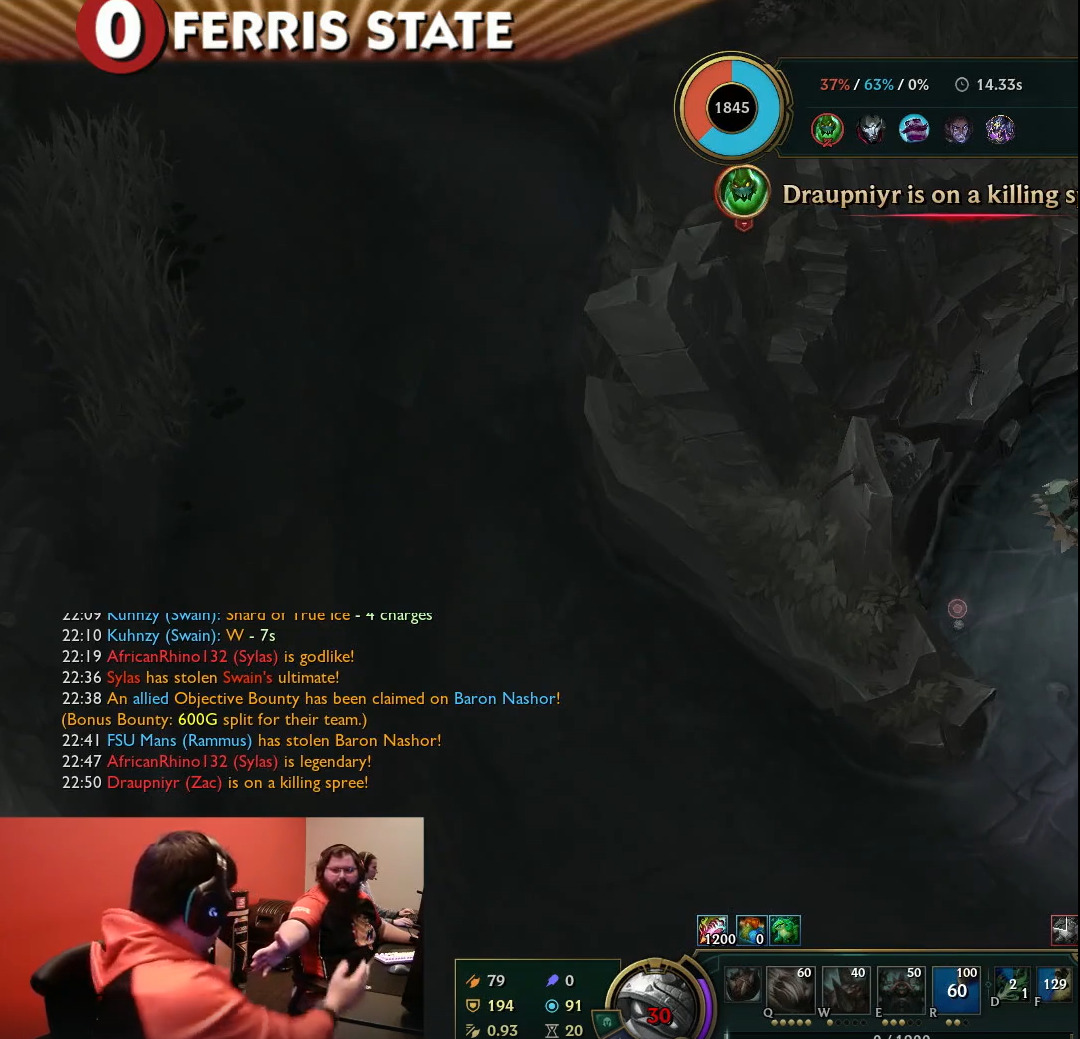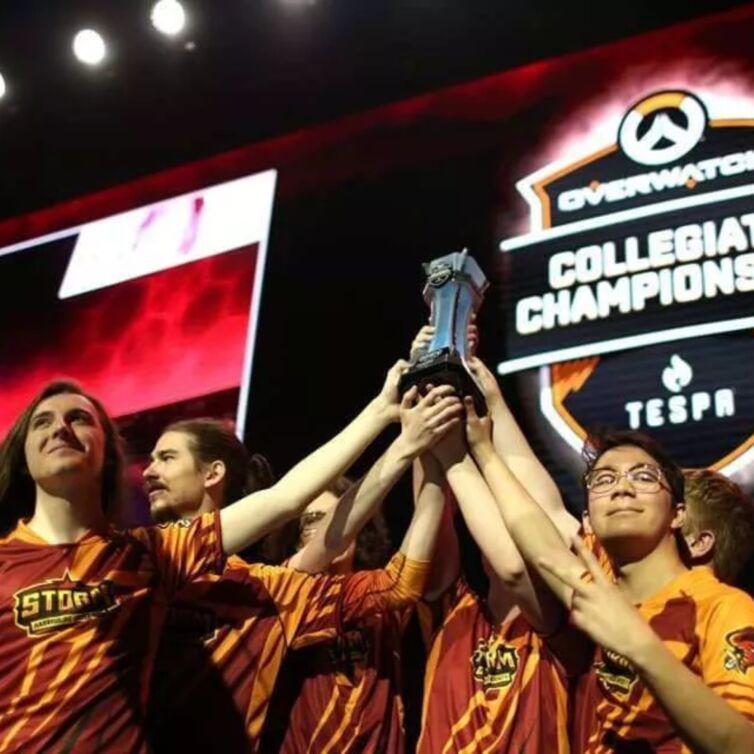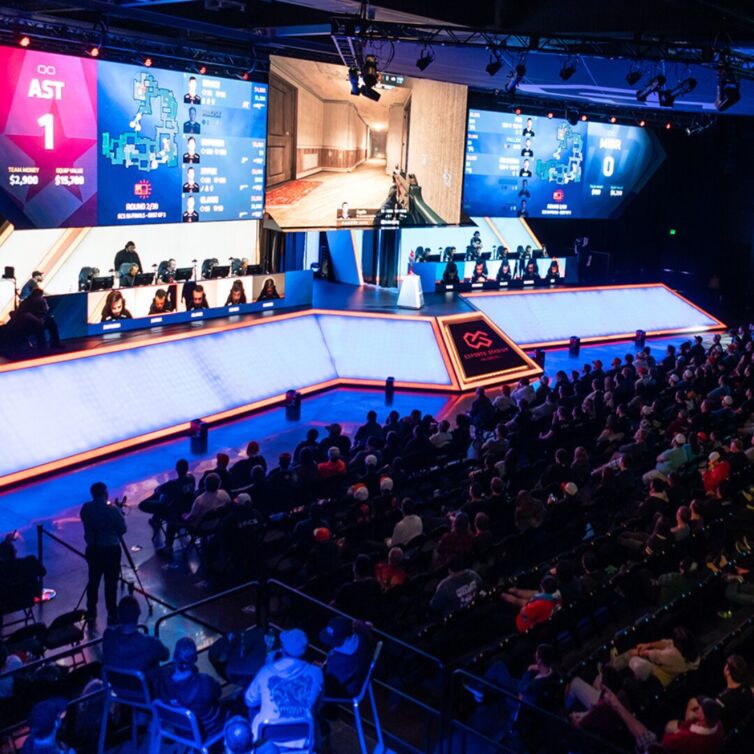Engaging the Campus Community With eSports
How eSports Engages Students on Campus | July 17, 2024
The attitude surrounding video games has come a long way in society, shifting from “video games will rot your brain,” to integrating eSports into higher education.
Online gaming with friends has been happening for years, but for Gen Z, it’s not just a way to play—it’s the primary way they experience video games.
Despite the recent rise in eSports teams and arenas, the general idea of eSports has been around for a long time. The first ever eSports tournament was held in 1972 at Stanford University. At the time, they called it, “The First Intergalactic SpaceWar Olympics.”
Obviously, video game tournaments have changed a lot since 1972. One of the main advancements that put eSports on the map is the use of streaming platforms like Twitch.
Launching in 2011, Twitch created the experience of playing video games with friends, watching professionals play video games, and the ability to chat and interact with others on the stream. With the combination of the consistent popularity of eSports and the newer streaming capabilities, eSports has become widely popular in the higher education setting.
There are currently 170 colleges with over 5,000 students playing in eSports programs in the U.S.—and popularity continues to grow.
Universities are using eSports to raise attendance for their school, just as they’ve been doing for decades with traditional sports. They’re not just trying to recruit students for their eSports teams, they’re giving eSport players incentives.
Universities are giving out hefty scholarships and the ability to win prize money from tournaments, not to mention the state-of-the art eSports facilities they’re building.

Apart from the excitement about a university’s eSports offerings, it’s crucial for these institutions to take a closer look at whether the university’s facilities can support the needs of an eSports team and be competitive with other programs.
Most eSports teams start off in university computer labs, but with the advancement of eSports, that won’t cut it anymore.
The first purpose-built eSports arena in Michigan at Ferris State University exemplifies the shift away from traditional computer labs, as they no longer meet the needs of eSports players.
As one of the first 50 schools to have an eSports club, Ferris State was pulling in more students across campus who weren’t involved before—and it is only growing.
The Ferris eSports teams initially played from their individual dorm rooms.
Then they used a computer lab for about a year before the Center for Virtual Learning was built, providing them with a dedicated eSports area.
Since launching the eSports arena, the facility has fueled the program’s expansion, doubling its size. The eSports director, Jono Eaton says much of the reason for their growth is due to their new, high-tech facility.
The camaraderie of playing on a team in a dedicated space is common in traditional sports but often overlooked in eSports. Universities sometimes deny budgets for eSports facilities, assuming it can all be done remotely.
Playing the game can happen from anywhere, but the broader life lessons are learned from tackling challenges as a team. This can’t be replicated online; it is best experienced in person as a real team.
Universities are continually seeking ways to engage all their students on campus and help them have an enjoyable experience, fueling proud alumni. eSports effectively fills a gap, attracting students who were previously disengaged.
This happened firsthand on Ferris State’s campus. Eaton mentions that while the eSports team can play online from their dorms, having a dedicated facility allows them to reach students who might not be interested in attending football games or other campus events. This engagement provides a unique connection for those who might otherwise feel disconnected from the campus community.
Eaton explained, “I actually had a student who was a senior and he said, ‘I only came here for my degree, I don’t care about Ferris,’ but after he joined the club, he got a jersey with his name on it, he started tuning into our broadcasts on Twitch, and at the end of it he said, ‘I’m proud to be a bulldog—I’m glad I came to Ferris.’”
These students are connecting on campus, and some students are transferring or committing to Ferris because they want to play on their eSports team. Eaton even said students are reaching out to him, asking to be recruited to come play eSports at Ferris.
As eSports continues its growth, dedicated facilities for university eSports teams are crucial for fostering leadership development and honing teamwork skills among students.
Beyond the competitive aspect, it connects individuals who might not have found camaraderie on campus otherwise. Involvement in eSports introduces diverse post-graduate opportunities, showcasing the multifaceted benefits of supporting gaming communities within educational institutions.
Through the lens of Ferris State, the success of eSports in higher education underscores the power of dedicated facilities in promoting camaraderie, school pride, and a sense of belonging among students.

For more insights on eSports, check out our article on how we created an engaging eSports facility for Ferris State University.





